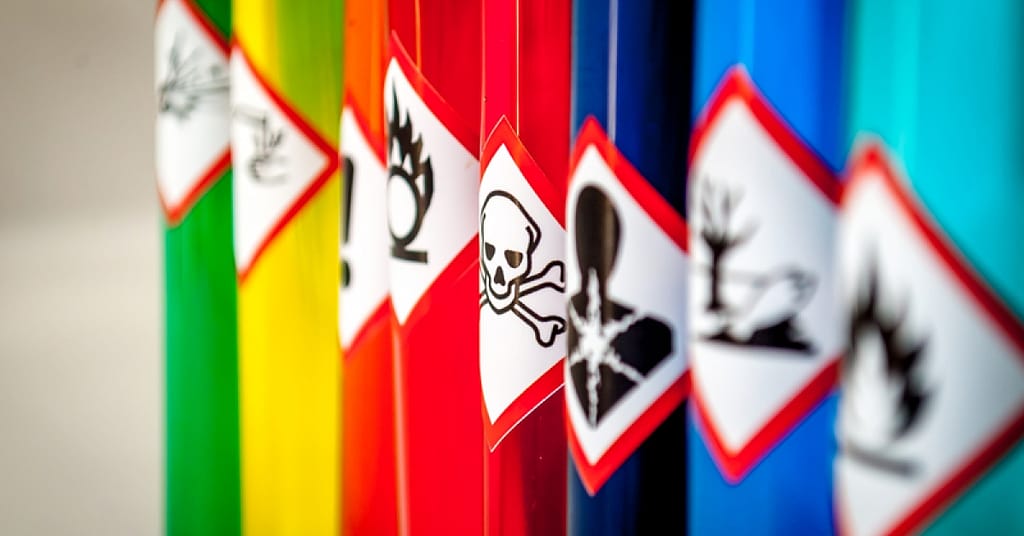(Carrick Pharmacy News) Your home is your safe space away from all the safety hazards of daily life. But certain household substances and items can pose serious safety risks to your family.
The good news is that you can take simple precautions to reduce the threats of these household safety hazards.
Poisons
Prescription medications, over-the-counter drugs, herbal supplements, vitamins and more are simply a part of daily life. When used properly, these substances can improve our health and how we feel. But many medicines can pose health hazards.
These risks are particularly high for children, who may not understand that certain medications or combinations of drugs can be highly toxic and even deadly. Still, medication mix-ups and accidental ingestion can pose threats to adults, too.
To avoid accidental poisoning from medications, keep all medications and supplements out of reach of children and make sure to always follow the medication instructions from your doctor.
But medications aren’t the only poison hazards around the typical home. The following items, among others, can pose a risk of poisoning when ingested and should be kept in a safe place away from kids:
- Pesticides
- Batteries
- Household cleaning products
- Gasoline
- Alcohol
- Cosmetics
- Laundry detergent
Carbon monoxide is another substance that can cause poisoning in the home. For tips on how to avoid carbon monoxide poisoning, click here.
Appliances
Poisonous substances may seem obvious to many parents, but not all household safety hazards are so easy to spot. For example, did you know that many household appliances can pose serious health and safety risks?
Dishwashers are a time-saver in the kitchen, but they can pose dangers in several ways:
- Sharp Objects – You always want to keep knives out of children’s reach, but placing knives in the dishwasher puts them closer to the ground, where kids can reach them. To avoid cuts, place knives with the blade pointed down in the silverware rack and unload the dishwasher quickly after the cycle finishes to minimize children’s access.
- Detergent – Dishwashing detergent can be toxic if swallowed, so it must be kept out of reach of children. Never leave the dishwasher pre-loaded with detergent because children may be able to reach it in the detergent compartment.
- Burns – Dishwashers use high temperatures to clean and sanitize dishes. When they remain closed, that’s no problem. But an improperly installed dishwasher could come open or unlatch and emit scalding water that could cause burns. Make sure your dishwasher is properly installed.
The dangers don’t stop with dishwashers. Stovetops, ovens and microwaves can pose burn risks — especially to children. Keep hot objects and appliances away from children. To keep little ones from reaching hot stove burners, use the back burners that are out of reach when possible and keep kids out of the kitchen until all burners have had a chance to cool.
Drowning
Drowning is a particularly severe risk for young children. Children who are 4 years old and younger can drown in just two inches of water.
It’s extremely important that parents supervise young children at bath time. Even a minute or two away can be enough time for drowning to occur. Also, keep toilet lids closed to keep children out.
For older kids and adults, swimming pools can pose serious drowning risks. Always make sure children are supervised in the pool, fence the area around your pool if possible, and never swim while under the influence of drugs or alcohol.
Falls
According to the National Home Security Alliance, falls are the top cause of death in home accidents.
Although anyone can fall and become injured, the risk tied to falling is particularly high for elderly people. For older people, whose bones may break more easily, hip fractures and similar injuries can lead to long-term mobility problems and even death.
Children can also fall down the stairs and be seriously injured.
To prevent falls in the home, consider the following tips:
- Install child safety gates at the bottom and top of the staircase.
- Maintain good lighting on and near the staircase.
- Consider installing a stairlift for elderly residents of your home.
- Consider adding carpeting to bathrooms for people who are at high risk of falling.
- Place non-slip bath mats outside of the shower.
Fires
Fires claim thousands of lives every year. The good news, though, is that you can take steps to boost fire safety in your home.
Consider the following recommendations:
- Create a fire safety plan and practice it with your family.
- Never leave lit candles unattended.
- Keep lighters and matches out of children’s reach.
- Get your home’s electrical wiring tested for safety on a regular basis.
- Exercise caution when cooking, and never leave heating oil unattended. Do not use water to put out a fire that starts in a pan; use a damp tea towel instead.
- Install smoke alarms in your basement, bedrooms and kitchen.
- Test all smoke alarm batteries every month, and replace the batteries at least twice each year.
If you have concerns about household safety for your family, speak with your health care provider.



